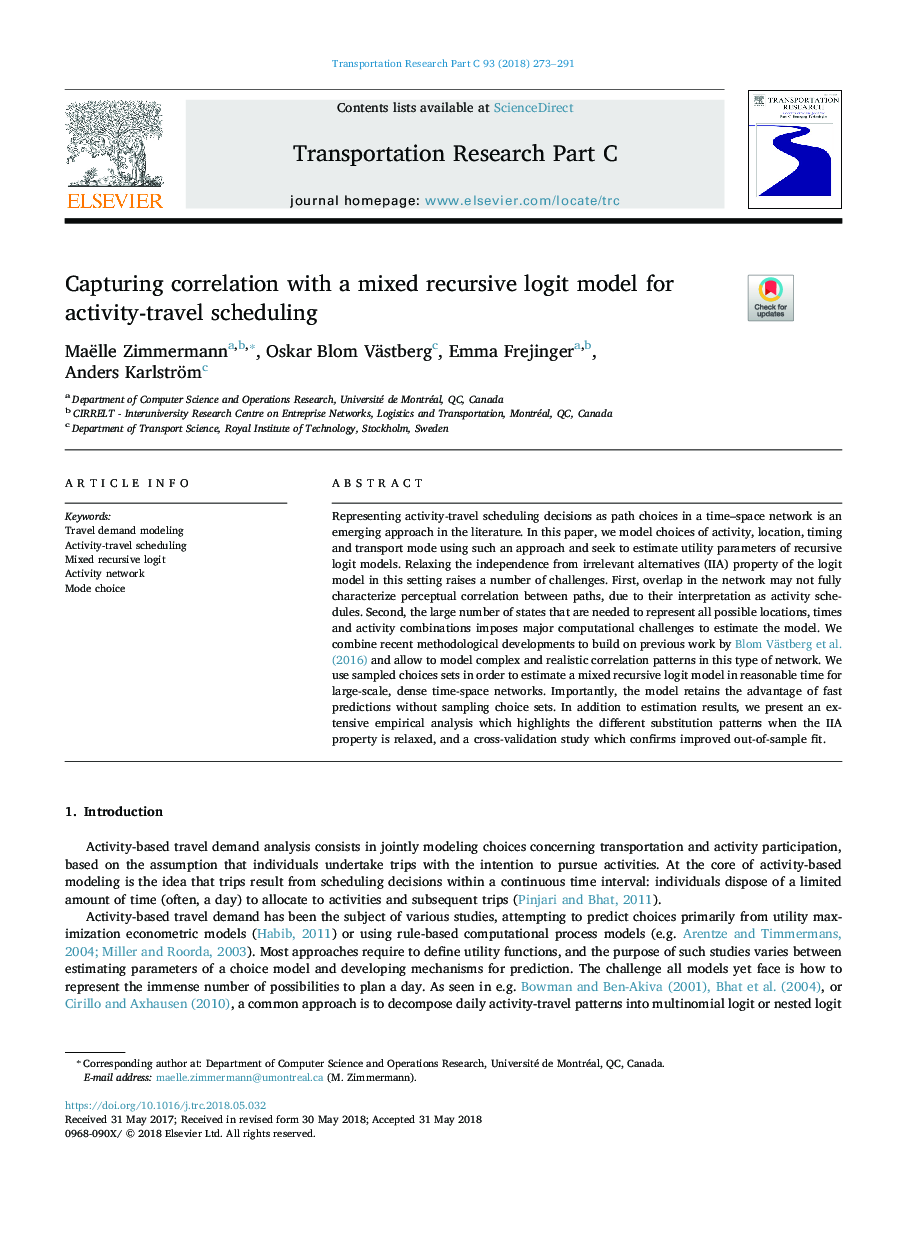| Article ID | Journal | Published Year | Pages | File Type |
|---|---|---|---|---|
| 6935759 | Transportation Research Part C: Emerging Technologies | 2018 | 19 Pages |
Abstract
Representing activity-travel scheduling decisions as path choices in a time-space network is an emerging approach in the literature. In this paper, we model choices of activity, location, timing and transport mode using such an approach and seek to estimate utility parameters of recursive logit models. Relaxing the independence from irrelevant alternatives (IIA) property of the logit model in this setting raises a number of challenges. First, overlap in the network may not fully characterize perceptual correlation between paths, due to their interpretation as activity schedules. Second, the large number of states that are needed to represent all possible locations, times and activity combinations imposes major computational challenges to estimate the model. We combine recent methodological developments to build on previous work by Blom Västberg et al. (2016) and allow to model complex and realistic correlation patterns in this type of network. We use sampled choices sets in order to estimate a mixed recursive logit model in reasonable time for large-scale, dense time-space networks. Importantly, the model retains the advantage of fast predictions without sampling choice sets. In addition to estimation results, we present an extensive empirical analysis which highlights the different substitution patterns when the IIA property is relaxed, and a cross-validation study which confirms improved out-of-sample fit.
Related Topics
Physical Sciences and Engineering
Computer Science
Computer Science Applications
Authors
Maëlle Zimmermann, Oskar Blom Västberg, Emma Frejinger, Anders Karlström,
